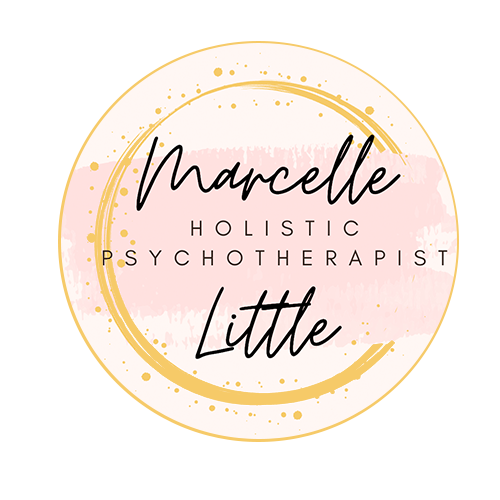7 Effective Techniques for Gap Repair in Relationships
Gap Repair refers to a therapeutic or relational process aimed at addressing and healing the emotional "gaps" in a relationship. In relationships, emotional “gaps” often emerge over time—places where needs went unmet, misunderstandings festered, or trust was fractured. For those navigating codependency, life transitions, or identifying as highly sensitive people (HSPs) or empaths, these gaps can feel even more profound. Add in the complexities of the mother-daughter dynamic, and the need for relational repair becomes crucial.
As a psychotherapist, I work with women to address these emotional gaps, helping them heal from the inside out. Below are seven effective techniques for gap repair tailored to individuals navigating relational challenges, sensitive emotional landscapes, and life transitions.
1. Recognize the Source of the Gap
The first step in repairing any relationship is identifying the origin of the disconnect. For many, this begins in the mother-daughter dynamic—a foundational relationship that often sets the stage for codependent patterns or difficulty with emotional boundaries.
Example: A daughter who grew up feeling responsible for her mother’s emotions may find herself prioritizing others’ needs over her own in adulthood.
Actionable Step: Reflect on early experiences and journal about unmet needs or recurring patterns.
Learn more about mother-daughter dynamics on my Mother-Daughter Coaching website.
2. Acknowledge Emotional Starvation
Many HSPs and empaths carry the weight of emotional starvation—feeling unseen or unappreciated for their sensitivity and emotional labor. Life transitions, such as a career change or becoming a parent, can amplify these feelings.
Example: You may feel drained in relationships where your emotional contributions go unnoticed or unreciprocated.
Actionable Step: Use somatic awareness exercises to identify where you hold emotional depletion in your body and begin releasing it through breathwork or gentle movement.
3. Set and Reinforce Boundaries
Gap repair is impossible without boundaries. For those navigating codependency, this can be especially challenging. Boundaries are not walls but bridges to healthier dynamics.
Example: A mother who expects constant contact might unintentionally pressure her daughter, leaving her feeling overwhelmed.
Actionable Step: Practice saying “no” in low-stakes situations, gradually building confidence in setting firmer boundaries.
4. Reclaim Your Voice
For highly sensitive individuals and people pleasers, voicing personal needs can feel daunting. Yet gap repair requires honest, compassionate communication.
Example: If a partner dismisses your feelings, it’s essential to name the impact this has on your emotional well-being.
Actionable Step: Use “I” statements to express your needs without blame. For instance, “I feel unseen when my concerns are dismissed, and I’d like us to find a better way to communicate.”
5. Reframe Life Transitions as Opportunities
Life transitions can magnify relational gaps but also offer opportunities for repair. Whether it’s moving through grief, a career shift, or motherhood, these moments can help you revisit and redefine relational patterns.
Example: A daughter stepping into her own motherhood role might reevaluate how she wants to relate to her own mother.
Actionable Step: Seek support from a therapist or coach to navigate these transitions with intention, fostering healthier dynamics.
6. Practice Self-Compassion
For codependent individuals or people pleasers, guilt and self-blame often keep emotional gaps intact. Healing requires breaking free from these cycles by cultivating self-compassion.
Example: If a friend criticizes your need for space, you may feel compelled to over-explain or over-apologize.
Actionable Step: Practice self-affirmations, such as, “I am allowed to prioritize my emotional well-being,” to counteract internalized guilt.
7. Revisit the Mother-Daughter Relationship
Whether directly with your mother (if possible) or through personal reflection, addressing the mother-daughter dynamic is key to repairing many relational gaps. This foundational relationship often shapes how we navigate connection, conflict, and emotional needs in other relationships.
Example: A mother who modeled people-pleasing behavior might inadvertently pass this on to her daughter. Repairing this relationship can break the cycle.
Actionable Step: Explore working with a coach or therapist to uncover and address the intergenerational patterns affecting your relationships.
Learn more about transforming the mother-daughter dynamic on my Mother-Daughter Coaching website.
The Path to Healing
Repairing relational gaps is a courageous and transformative journey, especially for HSPs, empaths, and those navigating life transitions. By addressing the root causes, setting boundaries, and reclaiming emotional agency, it’s possible to heal relationships—not just with others, but with yourself.
Gap repair begins with awareness, unfolds through intentional action, and blossoms into healthier, more fulfilling connections. Whether you’re exploring your past, navigating present challenges, or stepping into a new chapter, remember: healing relationships starts with you.

